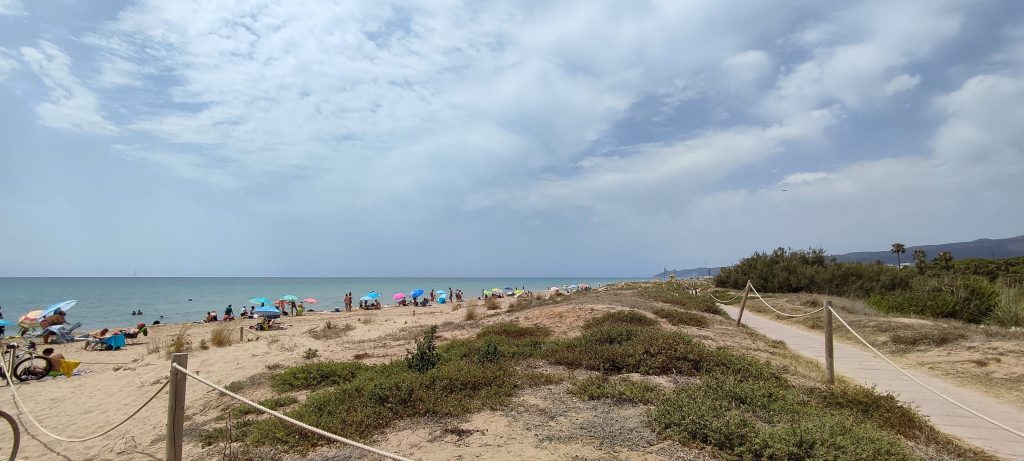Cities that have access to the sea or are near a lake have an ideal source for people to cool off. Even though many of us go to the beach to relax and escape from the heat of our homes, we must not forget that we share a place that is home for plants and animals. The Metropolitan Area of Barcelona has found the solution to create from the beach a place to reconnect with the environment. This idea has been awarded at European level.
The entire coastline of the metropolitan area was nothing but sand until the 1940s, when beach-going became a widespread hobby and recreational activity in the community. With this trend, problems have arisen for the biodiversity of the beach and the protection of the natural environment. During the 90s there were projects to create sand dunes that would serve as a natural habitat for seagulls and turtles, but also for plants that love the sun. Recently, in a project won at the New European Bauhaus in the reconnection with nature segment, 42 km of sand dunes were arranged near the tanning and bathing spaces.

Nuria Machuca, technician in the conservation and promotion of public spaces, welcomed us at the metropolitan beach in Gava and told us more about how Catalans are rediscovering the connection with the environment. The NEB project brought together volunteers who participated in various activities, from dune creation to educational events on topics such as butterfly biodiversity, man-made problems for marine life or climate change. The AMB team made up of biologists, environmental managers, engineers, representatives from the municipalities and volunteers managed to change the perception of people who saw the beach as a place to relax to a place that complements the city through its natural setting.

Sand dunes, in addition to the space for plants and animals, also have the role of maintaining the sand in that same place. Plants, whether native or acclimatized, do this through their roots that anchor the soil and create a buffer zone between the city and the beach. The places for volleyball, outdoor sports, kite flying are clearly demarcated from the area dedicated to biodiversity. The beach is open to all, with no entrance fee, and is visited annually by 11 million people, most of whom are residents of the metropolitan area. The beaches of the Barcelona Metropolitan Area stretch for 42 km. What is very important is that you can get to the beach by train, quite quickly and without the stress of an hour or more journey by car. Nuria told us that the degree of people’s satisfaction with the beaches is measured annually and in 2023 there was a premiere:
This year I asked for the first time when I asked people why they go to the beach. They said they were going to enjoy nature, instead of saying they were going for a tan or fun
The objectives underlying the creation of dunes are:
• Recovery of the typical vegetation of dune areas.
• Attracting fauna species characteristic for dune ecosystems.
• Improving the natural appearance of metropolitan beaches as well as the overall quality of the landscape.
• Preventing the access of people and dogs to the protection plots
• Creating an example for other municipalities to follow with beaches with similar uses, surfaces and dune geomorphology.

AMB has created a model of good practice that can be scaled wherever there are public beaches, where administrations care about the impact each of us has on the environment, and where there are engaged people who want to educate others about nature.
This article is part of the EU Commission project Functional Areas in the EU







